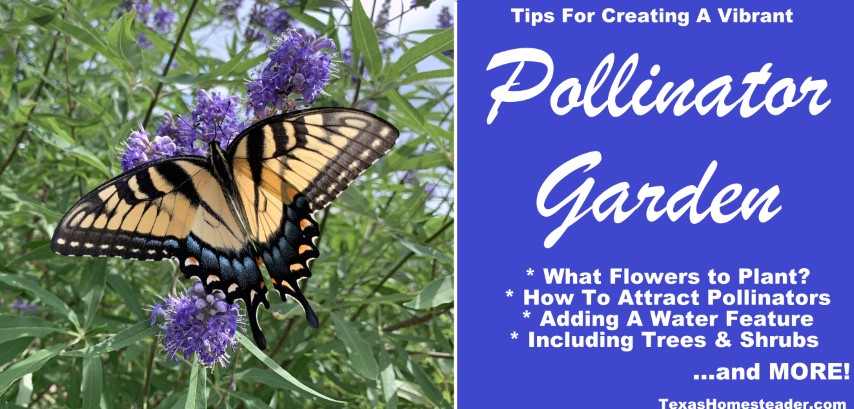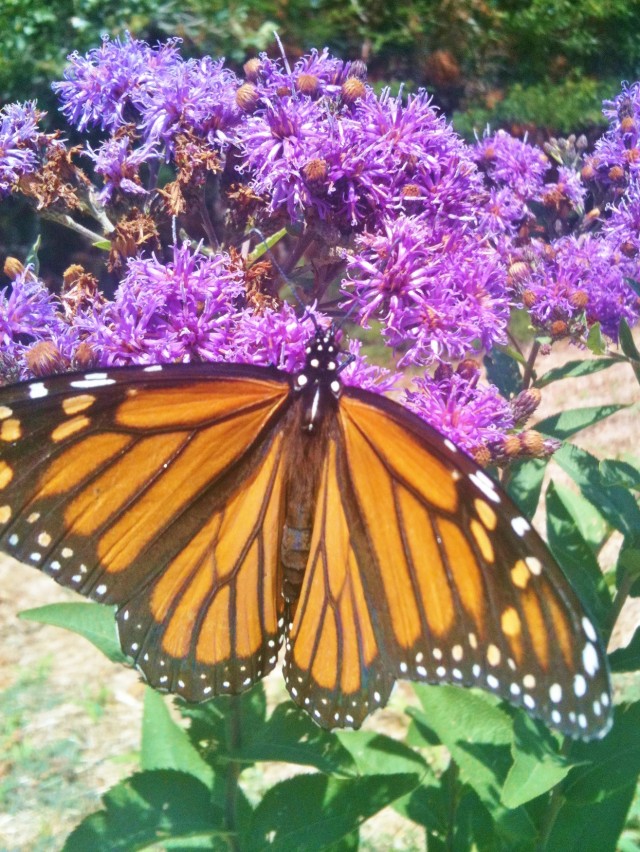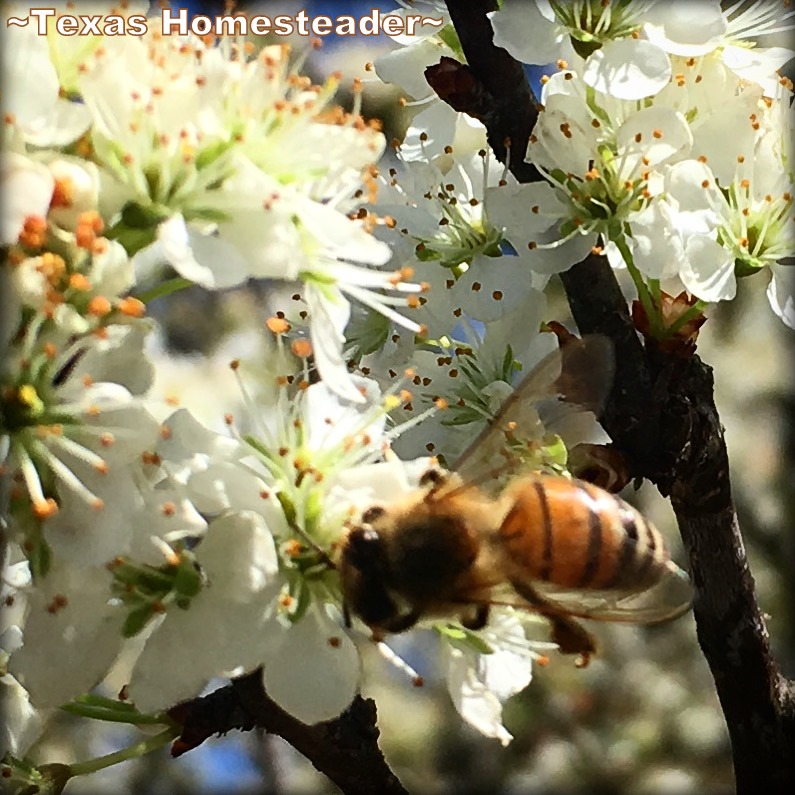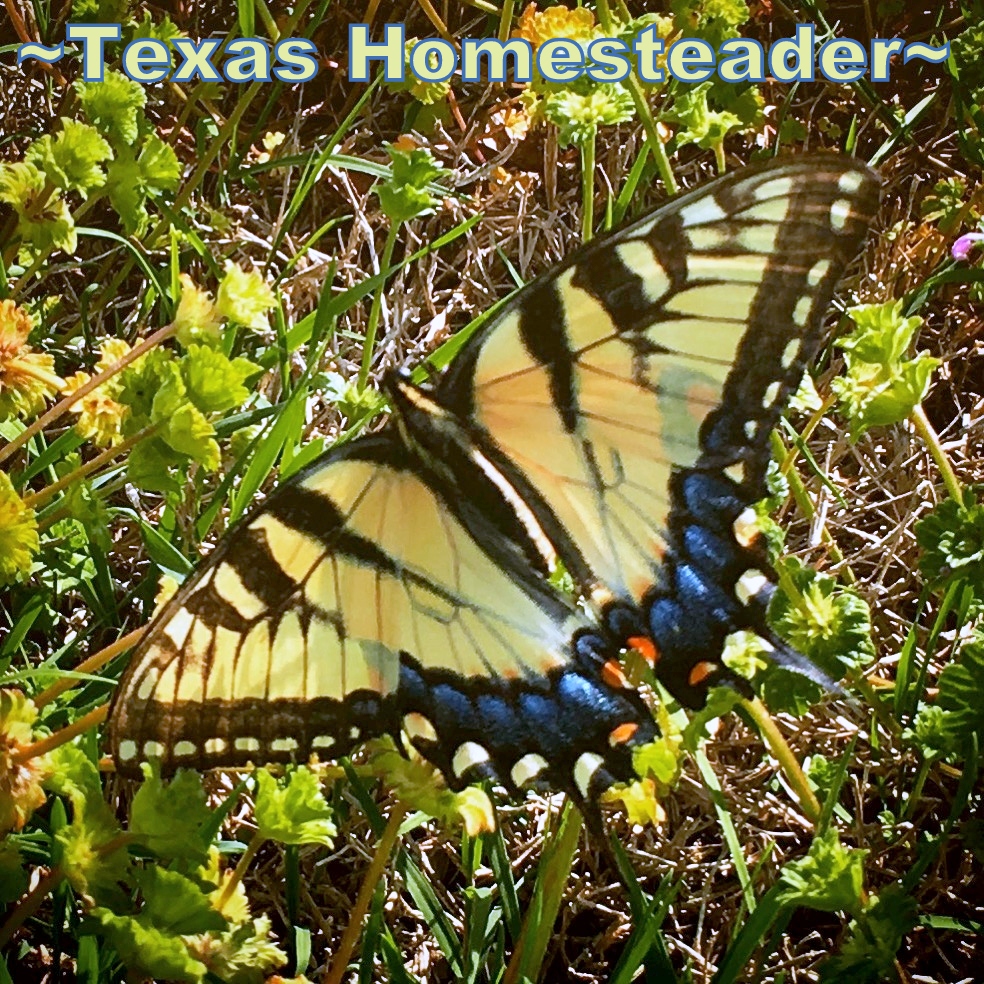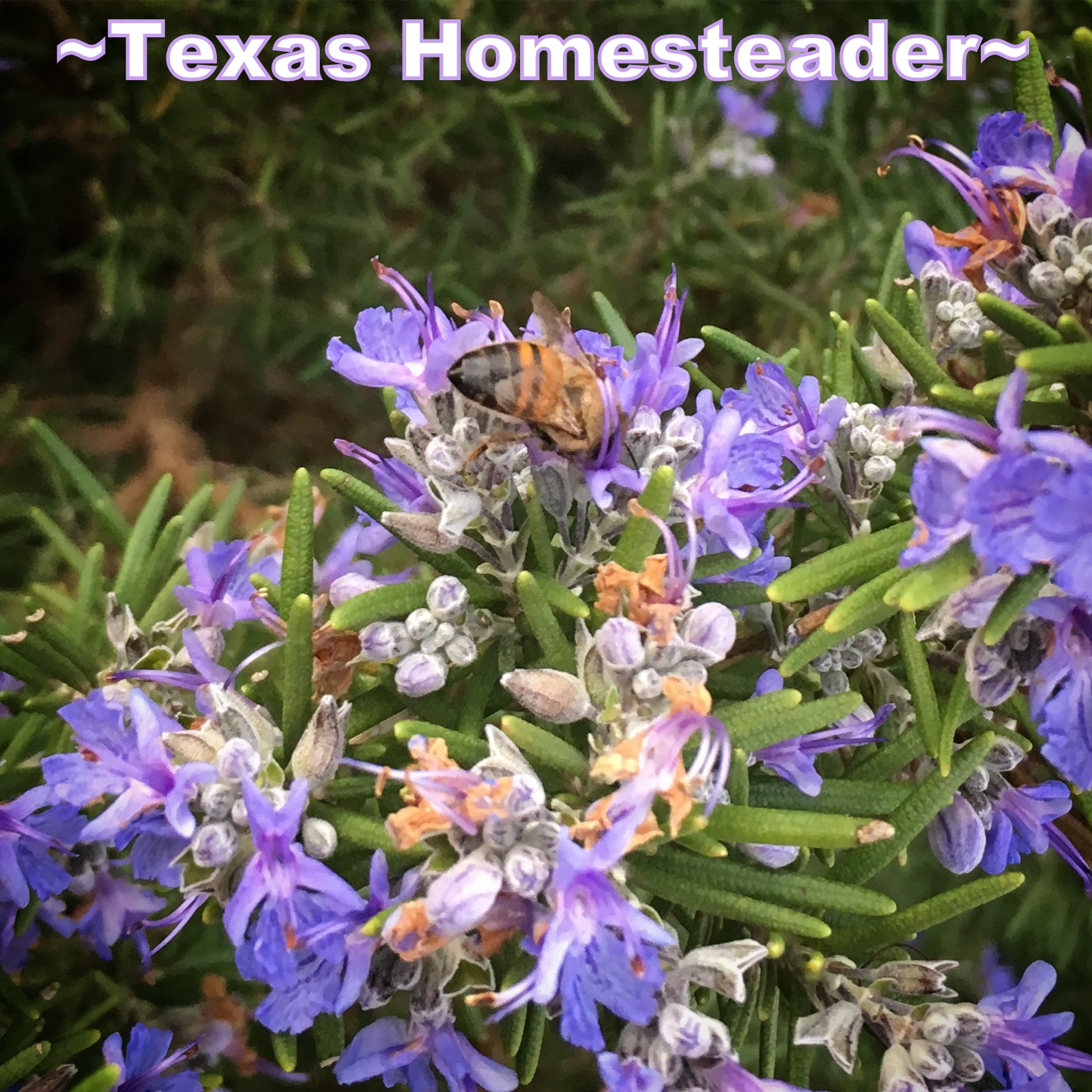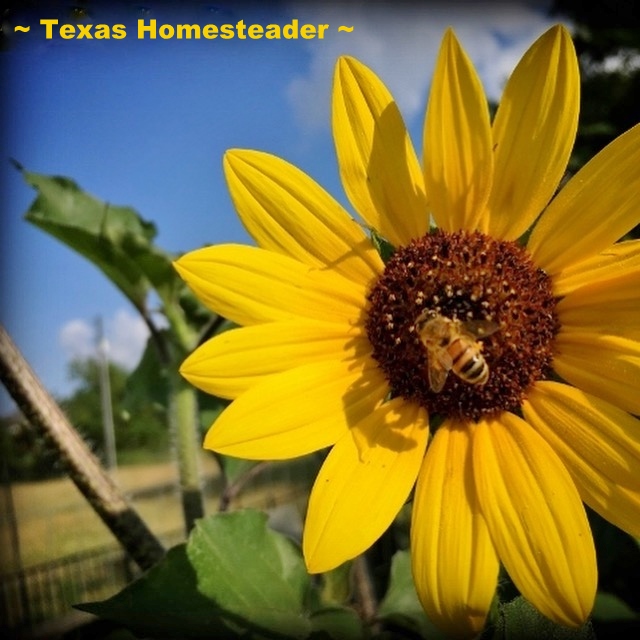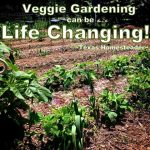by Texas Homesteader ~
June is National Pollinators Month! Are you looking to add a splash of color and vibrancy to your outdoor space while also helping to support the essential work of pollinators? Look no further than creating a beautiful pollinator garden!
What is a Pollinator?
Most people think of pollinators as honeybees. And bees are great pollinators for sure! But butterflies, beetles, moths, bats, wasps, birds, flies, and other insects all play an important role in pollinating plants.
It’s easy to attract and support them – just plant a beautiful pollinator garden!
What is a Pollinator Garden?
A pollinator garden is a space specifically designed to attract and support pollinators such as bees, butterflies and hummingbirds. They all play a crucial role in the pollination of plants and help ensure the growth of flowers, fruits, and vegetables.
Oh and they can be beautiful too! What a wonderful way to transform your landscape.
Benefits of a Pollinator Garden
Not only are pollinator gardens beautiful to look at but they also offer a host of benefits for the environment and pollinators. Here are some of the key advantages:
- Supporting Biodiversity: By providing a habitat for pollinators, you are helping to maintain a diverse and healthy ecosystem.
- Increasing Crop Yields: Pollinators play a vital role in the pollination of many food crops. So by attracting them to your garden you can boost your garden’s harvest.
- Enhancing Garden Health: Pollinator gardens are often more resilient to pests and diseases, as they attract beneficial insects to help control pest populations.
How to Create a Pollinator Garden
Creating a pollinator garden is easier than you might think! Here are some steps to get you started:
Tricks To Lure Pollinators To Your Garden
There are simple things to keep in mind when adding plants to your pollinator garden:
Flower Color – Red or yellow attracts the most butterflies & hummingbirds. Purple, violet & blue colors attract the most bees.
Flower Grouping – Group plants together instead of scattering them throughout your garden.
Blossom Shape – Choose the right type of flower for different pollinator mouth parts. Tubular vs. flat or bowl-shaped flowers, etc. For instance bees do best on shallow or tubular blossoms, beetles prefer bowl-shaped flowers, etc.
Bloom Time – Include various varieties of plants that will offer blossoms at different times of the year.
What Do Pollinators Need?
Think about what pollinators need so you can attract them to your garden:
-
Food
Research what to plant to utilize for the pollinators you want to attract.
-
Shelter
In addition to food sources, pollinators also need shelter. Incorporate features like bee hotels, rocks or logs for resting, hiding or hibernation spots.
And don’t immediately tidy up your gardens at the end of the season. Leave dead foliage and spent blooms until spring for your pollinators to shelter over the winter months.
-
Water
Try adding a birdbath or a shallow bowl to your pollinator garden. And keep it filled with stones and fresh water.
Avoid Pesticides & Herbicides
To keep your pollinator garden healthy and safe for its inhabitants, avoid using pesticides and opt for natural pest control.
-
- Use native plants which are often more pest resistant.
- Remove any pest-infested plants from your pollinator garden to keep plants healthy without using chemicals.
- Support beneficial insects such as lady bugs, lacewings, toads, etc. instead of insecticides.
- Use Mulch or cardboard to keep weeds from sprouting instead of poisons.
- Compost is a natural fertilizer.
Creating Interest With Different Plant Groupings
Don’t restrict yourself to planting only flowers. Add visual interest by including small trees, shrubs and different groups of flower species too.
For instance you can add a small tree, a flowering shrub, taller plants, shorter plants and flowers of many different colors that bloom at different times of the year. This will attract the greatest number of pollinators.
Be sure to chose the plants and flowers that work best in your area. And enjoy a splash of color too. Helping our pollinators has never been more beautiful – have fun with it!
~TxH~
My Favorite Garden Hacks
Garden Planning
- Easy Garden Planting Plan Spreadsheet
- Prepare Now! Late-Winter Garden Checklist
- How To Make Your Own Garden Soil
- Prepare Your Garden For Spring Planting
Seed Planting
- Planting Seeds In A Milk Jug Mini-Greenhouse
- Planting A Clear Tote As An Indoor Greenhouse
- Repurposed Cardboard Seed-Starting Pots
Soil Health
- Easy Compost For A Healthy Garden
- How Leaves Benefit Your Garden
- Using Manure In Your Compost & Garden
Garden Styles
- How & Why To Use Raised Beds In Your Garden
- 3-Sister’s Garden – The Original Companion Planting
- Planting A Large Galvanized Trough
- Where I Found The BEST Raised Bed!
- Planting A Blueberry Bush In Rustic Galvanized Tub
Garden Plants/Harvest
- Stevia – Growing Your Own Sweetener!
- My Simple, Zero-Waste Herb Drying Setup
- The Lazy Gardener’s Plant List – Plant Once, Eat For Years!
- How To Tell When Watermelon Is Ripe
- Luffa A Surprising Zucchini Substitute!
- How To Plant & Grow The Best Tomatoes
Water/Irrigation/Drought
- Keeping Potted Plants Watered
- Repurposing A Coffee Can For Deep-Soak Watering
- 3 Rainwater Collection Systems We Use
- Cheap (or FREE) Wood Mulch For The Garden
- Using Vining Plants For Living Mulch
- Surprising Use For Empty Clay Pots In The Garden
Weed Control
Garden Tips
- How To Save Outdoor Plants Even During A Hard Freeze
- Tricking Birds AWAY From Your Strawberry Plants
- Protecting Tender Seedlings From Wind
- Homestead Hack: Remember Where You Planted Seeds
- How I Use EcoBricks In The Garden
MORE Gardening Posts
C’mon by & sit a spell! Come hang out at our Facebook Page. It’s like sitting in a front porch rocker with a glass of cold iced tea. Lots of good folks sharing! You can also follow along on Pinterest, on Twitter or on Instagram.
If you’d like to receive an email each time a new blog post goes live it’s EASY to subscribe to our blog
References:
Cornell University: Pollinator Gardening
Pollinator.org: Native Pollinator Plants In Your Area
https://www.pollinator.org/guides
Find Your 2023 Updated USDA Plant Hardiness Zone

